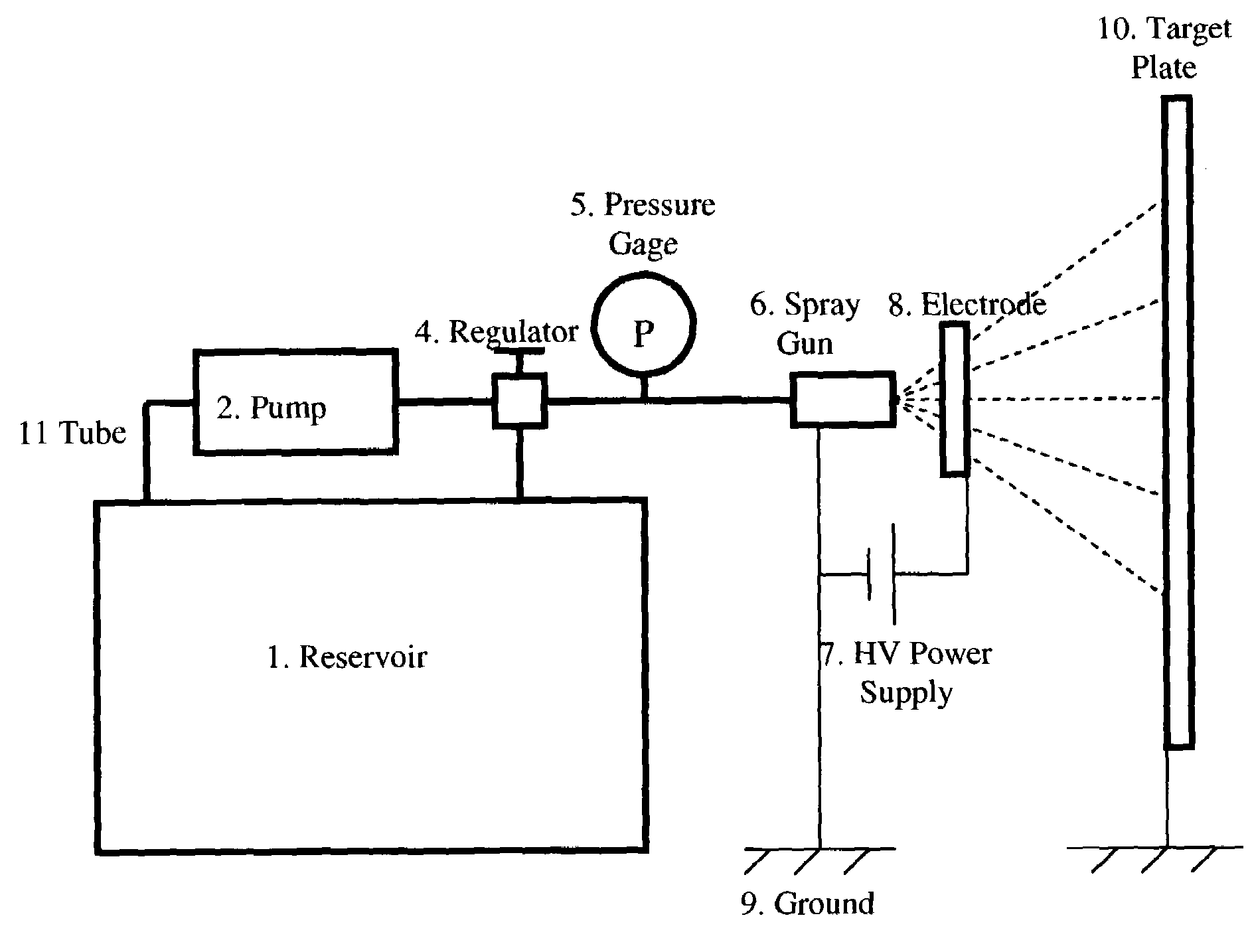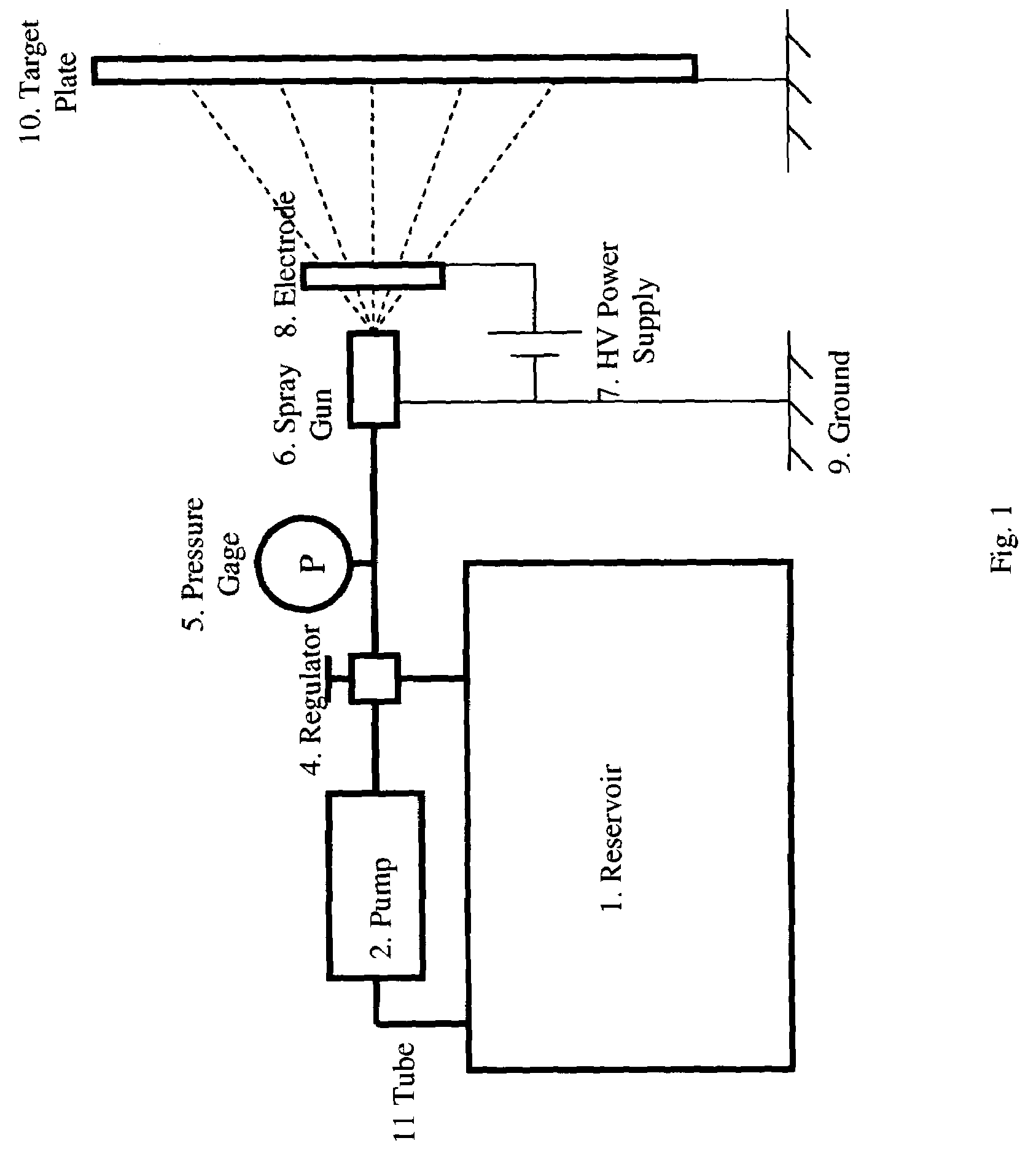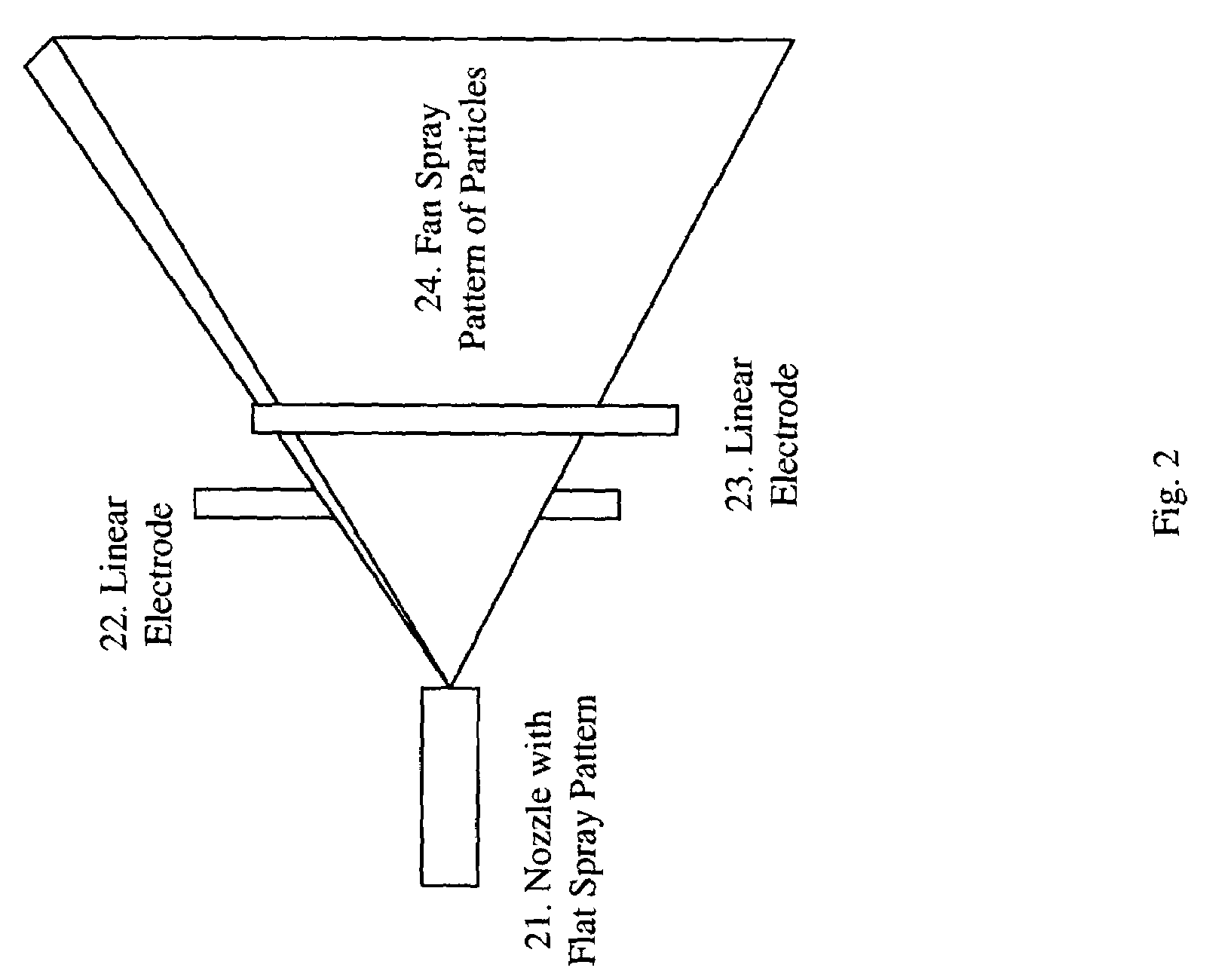Method and apparatus for electrostatic spray
a technology of electrostatic spray and electrostatic spray, which is applied in the direction of electrostatic spraying apparatus, lighting and heating apparatus, burners, etc., can solve the problems of high electrical energy storage in such a high-voltage reservoir, low charge density, and process instability, and achieve high charging current
- Summary
- Abstract
- Description
- Claims
- Application Information
AI Technical Summary
Benefits of technology
Problems solved by technology
Method used
Image
Examples
Embodiment Construction
[0035]An apparatus for electrostatic spray in accordance with the principles of the present invention is illustrated schematically in FIG. 1. The liquid or particles to be sprayed are contained in reservoir 1, which is connected by a tube 11 to a pump 4. The spray pressure is controlled by a regulator 4 and displayed by a pressure gage 7. The spray gun 6 is an integration of a valve and nozzle where the liquid or powders separate into particles. The electrostatic charge is induced from the ground 9 through the spray gun onto the particles by the high voltage on the electrode 8. The high voltage is generated by a high-voltage (HV) converter 7 which converts a low voltage DC signal into high-voltage DC output. The particles are sprayed toward a grounded object 10, e.g. a plate, where the charge on the particles is conducted back to ground 9. Instead of airless spray, the liquid or the powder could be atomized by compressed air supplied from an air compressor (not shown) into the spray...
PUM
 Login to View More
Login to View More Abstract
Description
Claims
Application Information
 Login to View More
Login to View More - R&D
- Intellectual Property
- Life Sciences
- Materials
- Tech Scout
- Unparalleled Data Quality
- Higher Quality Content
- 60% Fewer Hallucinations
Browse by: Latest US Patents, China's latest patents, Technical Efficacy Thesaurus, Application Domain, Technology Topic, Popular Technical Reports.
© 2025 PatSnap. All rights reserved.Legal|Privacy policy|Modern Slavery Act Transparency Statement|Sitemap|About US| Contact US: help@patsnap.com



